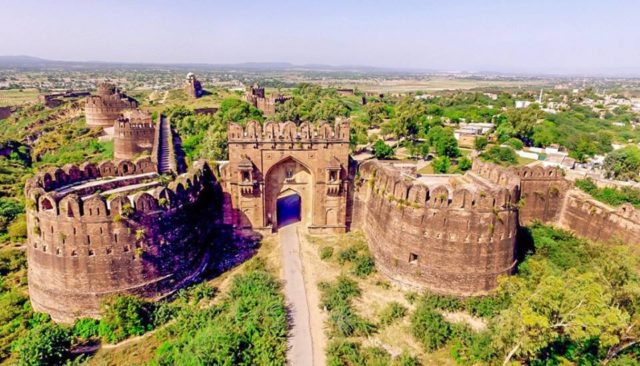Rohtas Fort
Rohtas Fort is a bona fide present fortress arranged close to the city of Jhelum in Punjab, Pakistan. The post is one of the greatest and by and large viewed in the subcontinent. The fort is known for its gigantic careful dividers and a couple of marvelous entryways.
HISTORY:-
Rohtas Fort was worked by Sher Shah Suri, to stop the Mughal Emperor Hamayun, ousted to Persia after a significant misfortune in the Battle of Kannaju. Sher Shah Suri knows the meaning of the fundamental area of Fort, to stop Mughal Emperor and Gakhar groups. Thereafter, the Fort was filled in as the capital of the Gakhar Tribes.
Rohtas Fort dividers have little Machicolations used by troopers to see inside to pour fluid lead and hot liquids on officials endeavoring to scale the dividers. The post gauges about 4 km in the outskirts showing the primary delineation of the productive combination of Pukhtun and Hindu designing in the sub-central area.
 Rohtas Fort is to dismiss a gorge, where the Kahan River meets a periodic stream inside the Tilla Jogian Range. The post covers an area of 12.63 segments of land, 2,660 feet above sea level and 300 meters over its incorporation.
Rohtas Fort is to dismiss a gorge, where the Kahan River meets a periodic stream inside the Tilla Jogian Range. The post covers an area of 12.63 segments of land, 2,660 feet above sea level and 300 meters over its incorporation.ARCHITECTURE:-
One stone is extraordinarily cut with "Allah".
Rohtas Fort has incredible enhancing parts, its high and low-help carvings, calligraphic etching in marble and sandstone, mortar embellishments, and covering tiles showing the early Muslim military plan.
Rohtas Fort stays following years and years to bear the waste, weighty downpours, overlooked by neighborhood government, made a couple of damages a few entryways. Nevertheless, water has seriously hurt its fortification and supporting dividers and the crumbling of its foundation. Furthermore, various legends acknowledge the Rohtas Fort shows a certified critical degree of decency and genuineness.
In 1541, Sher Shah Suri was mentioned to foster a solid defensive fort after the victory over Hamayun. Subsequently, the Qila Rohtas was given up to Hamayun in 1555. Until 1707 the Fort was used during the Mughal time frame. In any case, Afghan sovereigns Nadir Shah and Ahmed Shah Abdali were also utilized during the vanishing days of the Mughal Emperor. The Rohtas Fort is created on a level over the most elevated place of an incline with steeply rising sides.
















0 Comments